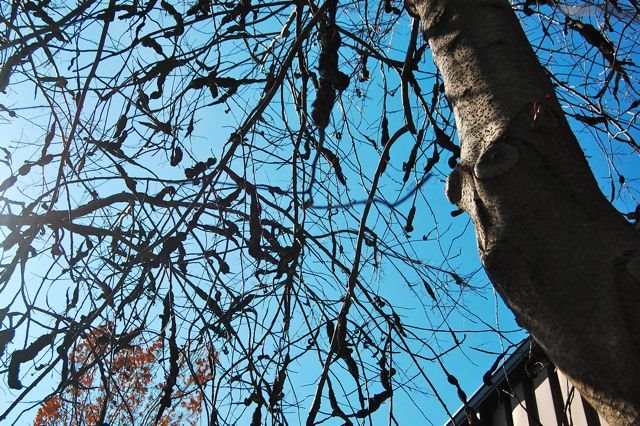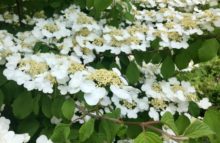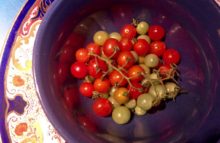Walking by Ted Reeve Arena on Gerrard Street East at Main, I spied what looked like dried black leaves persisting on some of the ornamental trees.
Turns out, it wasn’t leaves on the branches, but hundreds of thick, black growths; perhaps some kind of fungus.
Google came to my aid back at the ranch, and identified this as likely to be black knot of Prunus (Apiosporina morbosa) a fungus that attacks most species of the Prunus or plum family, including chokecherry, which I suspect the Ted Reeve trees might be.
If you are amongst the growing number of Torontonians who have a purple-leafed Schubert chokecherry (Prunus virginiana ‘Schubert’) in your garden, keep an eye out for this. Other ornamentals such as the pretty flowering almond (Prunus triloba) are equally susceptible.
The best treatment seems to be sanitary pruning, cleaning the pruners with a bleach solution between cuts and burning or deeply burying the infected branches. Best time to do this is in late winter or early spring, before the buds begin to break. That might be now if your tree is in a cooler microclimate.
Though slanted towards fruit production, this Fact Sheet from OMAFRA has useful information about early identification and management in our province. Another fact sheet, this one from the Alberta government, includes a list of vulnerable varieties.
Most sources recommend you catch it early, when the very first black knot appears as a smaller brown or olive coloured growth. Don’t ever let it reach the calamitous state you see here. What will they do with these poor trees; four or five of them, all equally infested?






4 comments
I've added a link to your blog so my readers can see your excellent photos of trees suffering from a serious infection of Black Knot. If you'd like me to take the link down, just let me know. It's at http://naturalcrooks.com/rambles/gross-ugly-black-gunk-stuck-on-ontario-cherry-trees/
Bet, you're welcome to spread the word. It's a disfiguring disease, but can be controlled if caught early enough, they say.
Yes, it sounds like careful pruning can be very helpful. One article I read also said that their trees self-healed after they removed all the nearby wild scrub that was prone to infections. (Their trees were too tall and large to spot early signs of damage and pruning them was very difficult at best.) Thanks again, Bet.
Bet, the follow-up to the story of the seriously infected trees I wrote about above is that the City, whose parks department maintains the trees, removed them entirely. I doubt they had any alternative.